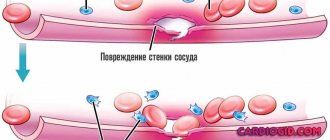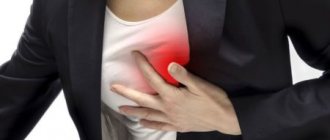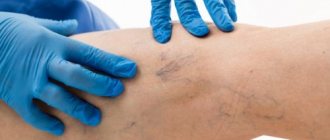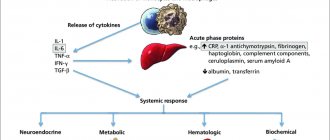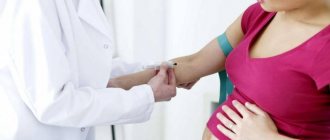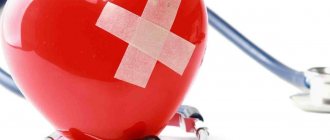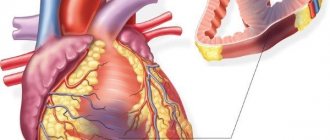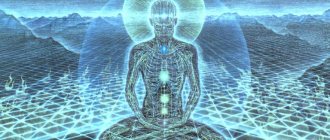Arrhythmia refers to pathological disturbances in the rhythm of the heart. They can be associated with the frequency or disturbance of the sequence of heart contractions: a rapid rhythm alternates with freezing. Cardiac arrhythmia in women is not as pronounced as in men.
Therefore, diagnosing the disease is difficult. Without proper timely treatment, negative consequences arise: arrhythmia becomes the cause of the development of more serious diseases. Regular preventive medical examinations will help avoid the development of pathology.
Characteristic features of the pathology
Arrhythmia is a systematic disturbance of the rhythm of the heart of a stable nature, associated with corresponding changes in their sequence and strength.
The normal number of heartbeats per minute is 60-90 beats.
Attention! It should be remembered that an increase in heart rate due to physical activity, psycho-emotional stress, which occurred once and is not systemic in nature, cannot be regarded as signs of arrhythmia.
Heart rhythm consists of several components. Normal heart function depends on the absence of failures in signal conduction, excitability of nerve impulses, contractions, and the operation of the automated system.
Therefore, there can be many reasons. They may be associated with disorders of the nervous system, pathological conditions of the heart, hormonal disorders, and genetic inheritance.
Signs, causes and risk factors for the disease
When our heart works normally, we do not even feel its presence in our body, as if it were not there.
But this doesn't always happen. In a healthy body, the rhythm of heart contractions is in the range of 60-80 beats per minute. Moreover, these contractions occur in the same rhythm, i.e. with the same frequency. But if the heartbeats become more frequent (with tachycardia), become less frequent (with bradycardia), or do not fall into a measured rhythm (with extrasystole), which are symptoms of arrhythmia, then in these cases the doctor diagnoses the pathology.
Signs of arrhythmia are the sinking of the heart, or, conversely, its erratic beating , if it is “pounding”, while discomfort may be felt due to pain in the chest, as well as fainting during long intervals between beats.
The main cause of arrhythmia is cardiac pathology, indicating a possible defect of the main organ, ischemic disease, myocarditis or cardiomyopathy. In some cases, it may precede myocardial infarction, and, sometimes, be a consequence of it. It is often caused by metabolic disorders, i.e. metabolism in the body.
There are so many causes of cardiac arrhythmias and they are all so different, depending on many factors, that it is quite difficult to list them all. Therefore, let’s name the most significant ones:
- stressful situations and depression;
- increased physical activity;
- improper metabolism;
- alcoholism, energy drink consumption and smoking;
- heart pathologies;
- infections and fungal diseases;
- menopause;
- brain pathology.
But it is precisely from accurately identifying the cause of cardiac arrhythmia that treatment brings tangible results. Although, many types of arrhythmia are purely symptomatic and do not require treatment at all. Moreover, they are always singular in nature.
In addition to cardiac pathology, the cause of cardiac arrhythmia is a disorder of the nervous or respiratory systems of the body, as well as gastrointestinal diseases. And often the provocateur of arrhythmia is our bad habits. More severe cases of arrhythmia occur as a result of drug overdose and intoxication, leading to anaphylactic shock.
And in the most severe form of atrial fibrillation, the symptoms in the form of an increase in its beats to 150 per minute cause severe dizziness and oxygen starvation in a person.
The causes of arrhythmia are quite often the presence of scar or necrotic tissue in the heart, which impedes the passage of electrical impulses, as well as thinning or, conversely, thickening of the walls of the ventricles of the heart, which incorrectly conduct these impulses.
The causes of arrhythmia after eating, and there is such a thing, is the pressure of a full stomach on the diaphragm. Rapid breathing appears, forcing the heart muscle to work harder to provide high-quality oxygen to the body’s tissues. It is necessary to understand for yourself that the process of digesting food is energy-consuming for the body. Therefore, you need to eat not in large portions, but in small portions, but often. Try not to eat fried and salty foods, and also do not try to lie down to rest immediately after eating, but accustom yourself to walking, for example.
This type of arrhythmia often affects adolescents recovering from anorexia and people who are overweight.
There are many answers to the question of what causes cardiac arrhythmia. As well as, indeed, symptoms, the main ones of which are shortness of breath, heart pain, low blood pressure, and disturbances in the rhythm of heart beats. If you experience this, you should be wary, as this is a sign of angina pectoris and cardiac arrhythmia.
The most dangerous manifestation of arrhythmia is the onset of ventricular fibrillation, characterized by chaotic contraction of individual muscle fibers. This pathology can lead to death.
Causes of pathology
Arrhythmia, in its essence, is not an independent disease, but rather a symptom characteristic of a particular pathology. It rarely manifests itself on its own.
As a rule, there are other accompanying signs. The main steps in treatment should be aimed at the root cause of the problem in order to prevent relapse in the future.
Arrhythmia in women can develop for reasons characteristic of the disease in representatives of any gender and age:
- physical activity that has a high frequency is excessive. However, there is not enough time for a complete recovery,
- sleep disturbance, lack of a full long period of rest,
- eating disorders: the use of a variety of diets, fasting, lack of eating regimen, consumption of too salty, fatty, spicy, spicy foods, alcohol consumption,
- frequently recurring strong psycho-emotional shocks,
- the presence of pathological problems of the cardiovascular system: heart attack, hypoxia of the heart muscle, heart failure, ischemic heart disease, heart defects of congenital and acquired etiology,
- other associated ailments: vegetative-vascular dystonia, severe hypoxia, hormonal imbalance, diabetes mellitus,
- manifestation of side effects due to the use of various medications. These are mainly hormonal and sedatives, drugs with caffeine,
- disturbance of electrolytic functions resulting from a lack of microelements,
- intoxication with nicotine or ethyl alcohol.
There are also distinctive causes of violations that are specific to women:
- sudden changes in hormone levels during menopause. Women over 40 are more likely to develop heart failure
- pregnancy period: hormonal changes, decreased hemoglobin levels, changes in metabolism, increased circulating blood volume,
- premenstrual syndrome: high levels of the hormone estrogen in the blood during this period contribute to the accumulation of fluid in the body, which favors the development of arrhythmia,
- female emotionality: a violent reaction to external stimuli, excitement in any stressful situation causes heart rhythm disturbances, mild arrhythmia can simply be ignored,
- good nutrition: the diet should be varied and contain all the necessary vitamins and microelements. With insufficient nutrition, the heart muscle weakens, becomes depleted, and cannot work normally.
Pathogenetically associated with arrhythmia may be:
- injuries to the head and sternum, as a result of which blood circulation is disrupted due to mechanical damage,
- electric shocks, severe frostbite causing the heart to stop or work at increased intensity,
- impaired blood viscosity due to a lack of microelements (potassium, calcium, magnesium).
The causes of arrhythmia can be either congenital or acquired.
However, there is a separate category - a risk group:
- age after 50 years,
- presence of bad habits, especially smoking,
- regular stress and depression,
- critically low body weight,
- overweight,
- consuming large amounts of caffeinated and energy-containing drinks,
- various pathologies of the cardiovascular system,
- the use of drugs that affect the heart or other parts of the circulatory system.
What is atrial fibrillation?
The heart consists of 4 sections - 2 atria and 2 ventricles. When the heart muscle contracts, the atria contract first, and then this process spreads to the ventricles. Atrial fibrillation is a form of arrhythmia in which the atria do not contract synchronously with the ventricles. And this prevents the ventricles from performing their role well - throwing blood into the systemic and pulmonary circulation.
With atrial fibrillation, the atrial contraction rate is usually significantly higher than the general heart rate and reaches 350-700 per minute. This flickering rhythm can be maintained for months, even years. Thanks to the atrioventricular node, the cardiac ventricles in most cases maintain a normal rhythm, or the rhythm of their contractions increases slightly.
Atrial flutter is often separated from atrial fibrillation. With this phenomenon, the atria retain their normal rhythm, but at the same time, erratic contractions of the atria with a frequency of 200-400 vibrations per minute are observed.
Approximately 0.5% of the population suffers from atrial fibrillation in various forms. The incidence rate increases with age. Among people over 60, 6% are sick; over 80, every tenth person is sick. Men are 1.7 times more likely to suffer from the disease compared to women.
Causes
Paroxysms of arrhythmia can be caused by:
- drinking alcohol and coffee in high doses,
- strong physical activity,
- stress and emotional overstrain,
- electric shock,
- surgical operations,
- hyperthermia,
- taking medications (diuretics, atropine, cardiac glycosides, adrenergic agonists, adrenaline).
In about a third of cases, the cause of atrial fibrillation cannot be determined. This arrhythmia is called idiopathic.
MA most often occurs in people:
- with hypertension,
- smoking,
- having excess weight,
- with heart defects
- with heart failure,
- suffering from ischemic disease (present in every fifth patient with atrial fibrillation),
- those suffering from thyroid diseases (a quarter of patients with hyperthyroidism experience attacks of atrial fibrillation),
- with cardiomyopathies,
- suffering from kidney and lung diseases,
- those suffering from sleep apnea,
- with cardiosclerosis,
- with electrolyte imbalance,
- with acquired (usually associated with the mitral valve) or congenital heart defects,
- with pericarditis or myocarditis,
- with a history of transient ischemic attack.
Many inflammatory heart diseases and coronary artery disease can lead to accelerated fibrosis of cardiac muscle tissue and its replacement by connective tissue. In this case, the conductivity of the fibers is disrupted, which is a factor contributing to the occurrence of atrial fibrillation. However, the mechanism of the disease has not yet been fully identified. Although it is assumed that zones at the mouth of the pulmonary veins are responsible for the formation of pathological impulses.
Single paroxysmal attacks of atrial fibrillation can occur in healthy people (up to 45% of all cases). Having relatives who have or have had atrial fibrillation increases the patient's likelihood of developing the disease.
Diagnostics
For diagnosis, methods such as ECG, 24-hour ECG, phonocardiography, ultrasound and cardiac radiography are used. Often, even with auscultation and palpation of the pulse, symptoms characteristic of atrial fibrillation are observed - erratic pulse, discrepancy between the heart rate and the pulse rate measured on the arm, abnormal noises, etc.
This type of diagnosis, such as an ECG, allows you to clarify the diagnosis and determine the form of atrial fibrillation. EchoCG reveals the size of the heart chambers and the presence of valve defects. Blood tests are taken to determine the level of thyroid hormones and cholesterol. Only after examining all the data can the doctor assess the prognosis of the disease and develop the optimal treatment strategy.
Treatment
The treatment method for atrial fibrillation largely depends on its form and severity. Sometimes taking medications will be sufficient. Most often used for atrial fibrillation:
- antiarrhythmic drugs,
- beta blockers,
- calcium antagonists,
- anticoagulants and thrombolytics,
- metabolic drugs.
Antiarrhythmic drugs used to relieve paroxysmal attacks of atrial fibrillation:
- procainamide,
- propanorm,
- cordarone,
- quinidine,
- amiodarone.
Drugs belonging to the class of anticoagulants:
- warfarin,
- acetylsalicylic acid,
- rivaroxaban,
- clopidogrel,
- apixaban.
For atrial fibrillation accompanied by tachycardia, it is possible to take beta blockers (metoprolol) or calcium antagonists (verapamil) to bring the heart rate within normal limits.
The drugs can be administered either intravenously or taken orally. Treatment with antiarrhythmic drugs should be accompanied by monitoring of blood pressure and myocardial parameters using an ECG.
For atrial fibrillation that cannot be corrected with medications, a cardioversion procedure is used. It involves applying an electrical discharge to the heart area using a special device - a cardioverter-defibrillator. The operation is performed in a state of narcotic sleep. The effectiveness of the procedure is quite high and amounts to 90%. Sometimes the use of drugs to normalize the rhythm is called drug cardioversion.
Anticoagulants are used for attacks of atrial fibrillation lasting more than 48 hours and before cardioversion. However, when treated with anticoagulants, bleeding may develop, so before starting therapy with such drugs, it is necessary to weigh all the risks.
Severe forms of the disease may require surgery (catheter ablation). After ablation, a pacemaker may be required.
During ablation, cells that provoke pathological electrical activity of the heart muscle are destroyed. The impact on the heart is not done with a scalpel, but with electric current, laser, cold or certain chemicals.
First of all, you should calm down (or calm the patient if the paroxysm of atrial fibrillation happened to someone else). The phenomenon of MA itself is rarely life-threatening. However, anxiety only intensifies unpleasant symptoms and contributes to the transition of the phenomenon into permanent or more severe forms. To calm down, you should drink 50 drops of Corvalol or Valocardine, take a tablet with valerian or motherwort. People around you need to support the patient morally.
It is necessary to stop any work, lie down or sit down (if it is not possible to lie down). The most optimal would be to take a semi-lying position. In a calm state, patients are less likely to experience shortness of breath. Then you should call a doctor. If this is not the first time a patient has encountered a condition, and he has already consulted a doctor about it, then the patient probably has medications prescribed to him for these cases. You must take them, following the dose prescribed by your doctor. Other methods of self-medication can be dangerous.
Symptoms of cardiac arrhythmia
Symptoms of arrhythmia can manifest in different ways.
They are usually divided into three groups:
- attacks for no apparent reason, manifested by a sharp change in heart rate, which can lead to loss of consciousness,
- systemic manifestations: heartbeat disturbance is accompanied by general weakness and other characteristic signs,
- the occurrence of arrhythmia without obvious manifestations.
Symptoms of arrhythmia development:
- sensation of a distinct heartbeat rhythm:
- rapid rhythm with tachycardia,
- feeling of heart stopping with bradycardia,
- heart flutter with mixed arrhythmia,
- noticeable disruption of the heartbeat rhythm during extrasystole,
- feeling of heaviness and pain in the sternum,
- general weakness, dizziness,
- depressive states with frequent mood swings and the emergence of fears, including fear of death.
Due to a more emotional perception of pathological changes, women have special symptoms of arrhythmia:
- difficulty breathing, feeling of lack of air,
- darkening in the eyes,
- disorientation, momentary loss of consciousness,
- a sharp increase in temperature that does not last long and goes away on its own.
Attention! It should be remembered that the development of arrhythmia is possible in men and women of any age. If you notice any irregularities in your heart rhythm, contact your cardiologist immediately.
Young age, excellent health, absence of bad habits and heart pathologies in the past do not guarantee protection against the development of arrhythmia.
Arrhythmia: causes, symptoms, signs
Our heart, like a clock, in its normal state works with the same rhythm, frequency and regularity, thereby ensuring uninterrupted delivery of the necessary organic, mineral substances and oxygen to all tissues and organs.
But in the event of some kind of malfunction in the functioning of the main “driver” of the body, we talk about arrhythmia. In medical practice, many types of this disease have been recorded, therefore, different symptoms of cardiac arrhythmia require different treatment. But we will talk about treatment in a separate article, and here we will look at the causes, symptoms, differences, manifestations of arrhythmias, in order, as they say, to know the enemy by sight.
Main forms of arrhythmia and their characteristics
Heart rate is the basis for classifying heart rhythm deviations into the following forms:
- normocardia: 60-90 heart beats per minute, heart rate is normal, rhythm is disturbed,
- bradycardia: less than 60 heart beats per minute, characterized by a slow heart rate, blood supply to organs and tissues is disrupted,
- tachycardia: more than 100 heart beats per minute, accelerated heartbeat, weak heart filling and blood ejection, resulting in tissue hypoxia.
If we classify pathology according to the cause of its occurrence, we distinguish the following groups of diseases:
- Normotropic disorders of automaticity. The sequence and correctness of the phases of the cardiac cycle do not change, the mode of generation of impulses by the sinus-atrial node is changed. The heart speeds up or slows down its rhythm.
- Heterotropic disorders of automaticity arise due to the influence of the lower nodes of the conduction system on heart rate. The impulse control center is displaced, the synchrony of contractions is disrupted.
- Extrasystole occurs when the ability of the myocardium to perform a response function to incoming impulses is impaired. Incomplete contractions are formed due to the generation of signals by other parts of the heart.
- The mixed type is distinguished by an increase in the supply of exciting impulses and a simultaneous decrease in their conductivity. This type includes atrial fibrillation and cardiac flutter.
Diagnosis of the disease
To carry out high-quality diagnostics, it is necessary to complete all successive steps:
- studying the anamnesis by interviewing the patient and studying the history of his diseases. What matters is the strength and frequency of manifestation of arrhythmia symptoms, how long ago the first signs of abnormalities appeared, even the time of day characteristic of the manifestations of the disease is important,
- making a primary diagnosis is possible based on the results of auscultation - listening to the rhythm and heart rate using a stethoscope,
- laboratory tests of blood and urine: general and biochemical analysis, determination of hormonal levels,
- conducting electrocardiography. The procedure helps determine the type of arrhythmia. In some cases it is performed with a load,
- ultrasound examination to determine the affected areas of the myocardium and other heart pathologies,
- MRI allows you to clarify the stage of the disease, identify complications in other organs, pathologies affecting the heart rhythm,
- diagnosing tachycardia using carotid sinus stimulation. Changes in heart rate are monitored when pressing on the right carotid artery. The cells in this area perform a regulatory function in heart rate.
Arrhythmia in pregnant women
Very often, heart rhythm disturbances are diagnosed in pregnant women. Moreover, the majority of expectant mothers who complain of symptoms of arrhythmia have not previously had any heart problems. In this case, there is no need to worry. The reason for such changes was pregnancy itself, when a woman’s body experiences hormonal changes, the fetus puts pressure on the diaphragm, making breathing difficult, and the amount of vitamins and microelements necessary for the functioning of the female body is significantly reduced. It is highly likely that after childbirth, all signs of arrhythmia will disappear.
Sometimes everything happens with precision, but vice versa. Previously, the woman suffered from heart rhythm instability, but during pregnancy she began to feel much better. Then you won't need medical help.
If signs of arrhythmia occur, you should definitely consult a doctor. You need to understand that in this situation, a woman is responsible not only for herself, but also for her unborn child, and therefore must treat her health with maximum attention.
Treatment of the disease
The effectiveness of therapy depends on high-quality diagnostics. Treatment of arrhythmia is determined by the pathology that was the root cause of the development of disorders. Depending on this, methods and treatment regimens are selected for each patient individually.
Traditionally, 2 methods of combating the disease are used:
- conservative therapy. Involves the use of various medications. In case of pathological changes in the heart, you should take medications aimed at strengthening the myocardium and restoring its functionality: beta blockers, diuretics, calcium channel blockers, statins. In case of increased nervous excitability, sedatives are prescribed: Persen, Afobazol, Novopassit. Drugs that have a direct effect on normalizing heart rate: Cordarone, Sotalex, Propafenone.
- surgical interventions are indicated in extreme cases in the presence of serious pathologies. Currently, surgery can be replaced by radiofrequency ablation. Radiofrequency waves cauterize a small area of the myocardium. The procedure stimulates the uninterrupted functioning of the scar and also helps restore the functionality of the tissues adjacent to the scar.
If there is a threat to life, surgery to implant a pacemaker is prescribed. The device is designed to maintain heart performance at a certain level and performs stimulation in case of cardiac arrest.
Treatment of arrhythmia with folk remedies
Important! You cannot prescribe treatment for yourself. Before treatment, be sure to consult your doctor, because... Even folk remedies can harm the body!!!
Read also Hepatitis C - first signs, symptoms, causes and treatment of hepatitis C
Valerian infusion. 1 tbsp. Pour a spoonful of crushed valerian root into 1 glass of boiled water (room temperature). Leave in a sealed container for 8-12 hours, strain and take 1 tbsp. spoon 3-4 times a day.
Valerian decoction. Pour 2 teaspoons into 100 ml of water, boil for 15 minutes and take 1 tbsp. spoon 3-4 times a day before meals.
Calendula infusion. Pour 2 teaspoons of calendula flowers with 2 cups of boiling water, let stand for 1 hour and strain. Drink 0.5 glasses 4 times a day.
Melissa infusion. 1 tbsp. Pour 2.5 cups of boiling water over a spoon, let stand for a couple of hours (wrapped up) and strain. Drink 0.5 glasses 3-4 times a day. Take weekly breaks once every 2 months.
Hawthorn tincture. Pour 10 g of dried hawthorn fruit into 100 ml of vodka and leave to brew for 10 days. Strain and take 10 drops with water 3 times a day before meals.
Decoction of hawthorn flowers. Pour 5 g of hawthorn flowers into 1 cup of boiling water, cover with a lid, heat in a water bath for 15 minutes, cool and strain. Drink 0.5 glasses 2-3 times a day 30 minutes before meals.
Radish juice with honey. Mix fresh juice of black radish and honey in a 1:1 ratio. Take 1 tbsp. spoon 2-3 times a day.
Horsetail infusion. 1 tbsp. Pour 400 ml of boiling water over a spoonful of dry crushed horsetail herb, let it brew for 2 hours and strain. Take 1 tbsp. spoon 5-6 times a day.
Snack for arrhythmia. Grate the celery, add parsley, dill, mayonnaise and a little salt. Eat the resulting mixture once a day, before dinner. This delicious medicine can be eaten separately, or spread on bread.
Onion with apple. Chop a small onion and 1 apple. Mix and take between meals 2 times a day for 1 month.

